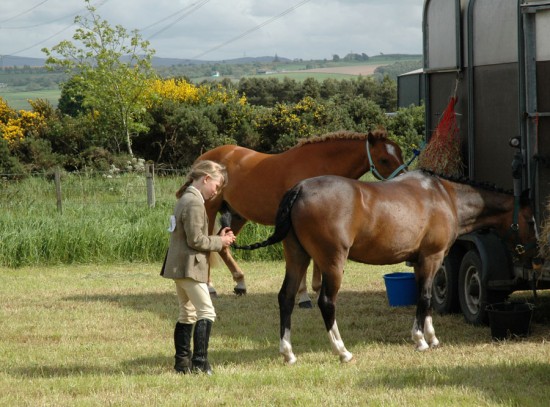
It is important to make sure your dog is trained on a lead.
All puppies older than 8 weeks are ready for leads and collars. Purchasing a lightweight nylon collar and lead that fits your dog should be one of the first things you do. Make sure your puppy has adjusted properly to their collar before introducing them to a lead. In doing so, it is important to remember two things: First, you should always remove your puppy’s collar prior to placing them in a cage or crate. Second, you should never use a choke chain collar on puppies.
While choosing a lead, keep in mind that if you have a smaller dog (who doesn’t pull too hard), you should purchase a nylon or Ribbon lead. Leather leads are best used when you have a larger breed dog, or a pup who “does all the walking…”!
While the length of the lead is up to you, if you plan to take your dog to obedience training, it is best to purchase a 6-foot lead, which is generally required for these classes. You may wish to purchase more than one lead, because 4-foot leads will provide you with greater control, especially if you and your dog are moving about through town. Retractable leads are another option, however it is best to allow your puppy the “additional freedom” offered by these leads once they have been properly trained with a shorter lead.
4-Steps for Successful Lead Training
1. When you first attach a lead to your puppy’s collar, be sure to allow them 10-15 minutes a day just feeling the lead drag behind them as they move about. Generally, you should do this for about a week, prior to moving on to the next step. In do this, be sure that your puppy does not attempt to chew or play with the lead, or even become afraid of it. Distracting your puppy with a game, ball or toy should help eliminate these problem behaviors.
2. When you are sure your puppy is used to the lead being on them, pick it up, while following your puppy wherever they go. Make sure to keep the lead as loose as possible for now, making sure not to pull back against your puppy (unless unavoidable). Repeat this step for about a week.
3. After step two, as your puppy begins pulling you around even more, it’s your turn to pick up the lead. This time however, it is your turn to begin taking over the control. Make the training fun, taking along your pup’s favorite toy or a “special” treat to help with the process. At this time, you should take off in one set direction. Should your puppy follow you willingly, encourage this with lots of praise. If your pup doesn’t follow you, sits to fight you, or takes off in the opposite direction (many do) take the object of your pup’s affection moving it in front of them so that they follow it in the direction you’re going. While doing this praise them lightly. Be sure to make sure you are praising your pup while they are doing what you want them to do, not while they are fighting you. This may take some time, however, eventually your pup will get it.
4. Never pull or jerk on the lead, even as tempting as it may seem in order to correct your dog. Remember, it’s your pup’s natural instinct to pull back. When you do this it may greatly increase the time it takes you to train your pup, besides it won’t serve to get the message you want across anyway. Also, this could cause your pup to fear their lead. In which case, you’ll serve to lengthen the time it takes for proper training, in some instances making it seem nearly impossible to do so.
Repeat these steps daily for about a week. While doing this, you should see your puppy becoming more confident while on the lead, as you see marked improvement in regards to the amount of control you have over your pup.
Using these tips effectively will greatly increase the amount of time you will like to spend walking your dog. It will make this time more enjoyable for the two of you, as well as for any one two-legged or four you encounter along the way!
Mike Steele
http://www.dog.com
 Pet Urns for Cats
Pet Urns for Cats
Cats are beautiful creatures
Pet Urns for Cats
Pet Urns for Cats
Cats are beautiful creatures
 Why Do Chihuahuas And Other Small Dogs Shiver ?
Why Do Chihuahuas
Why Do Chihuahuas And Other Small Dogs Shiver ?
Why Do Chihuahuas
 Understanding The Vision Of Dogs - What Does Your Dog See?
Understanding The
Understanding The Vision Of Dogs - What Does Your Dog See?
Understanding The
 Considerations When Buying A First Pony For Your Child
Considerations Wh
Considerations When Buying A First Pony For Your Child
Considerations Wh
 Problems With Loading And Transporting Your Horse
Problems With Loa
Problems With Loading And Transporting Your Horse
Problems With Loa
Copyright © 2005-2016 Pet Information All Rights Reserved
Contact us: www162date@outlook.com